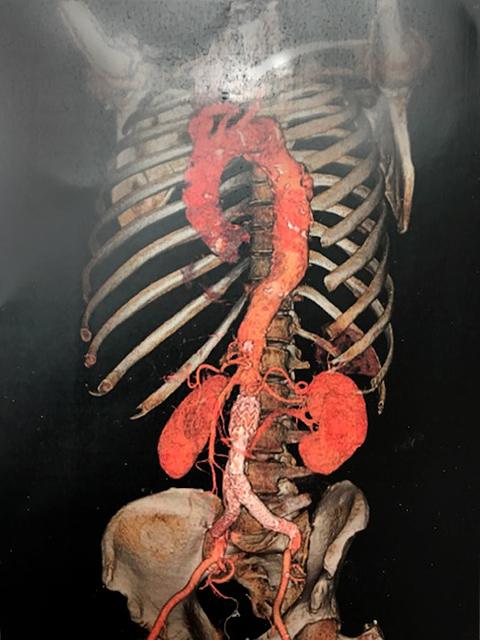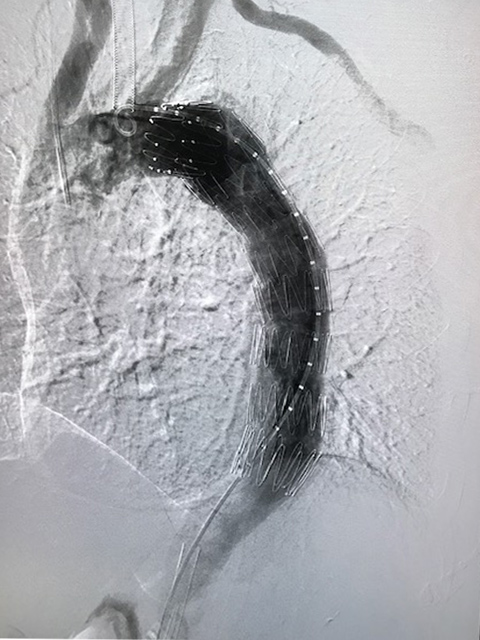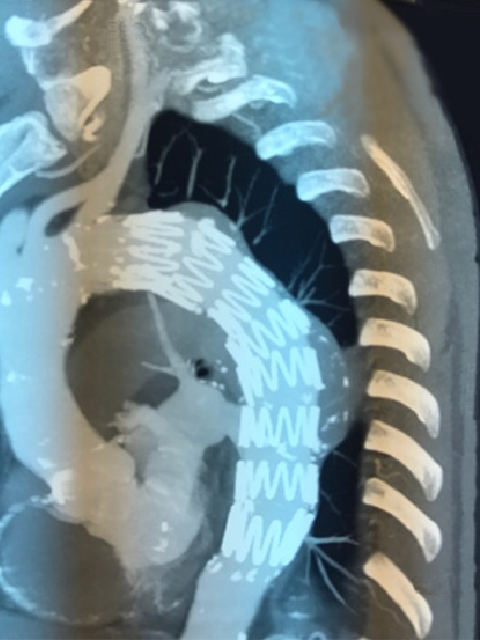What are thoracic aortic aneurysms?
The aorta is the main artery that carries blood from the heart to all the organs of the body. A thoracic aortic aneurysm is the abnormal dilation of a segment of the aortic artery found within the thorax. The greater its dilation, the greater the risk of rupture, bleeding, and death.
Risk factors
Thoracic aortic aneurysms are generally very rare, but 20% of them are associated with a family history.
The risk may be higher with some genetic syndromes such as Marfan syndrome, Ehrlers-Danlos syndrome, and Turner syndrome.
They can also occur as the person grows, if they smoke, and if they have high blood pressure.
Thoracic aortic aneurysm symptoms
There are generally no symptoms and this type of pathology is found incidentally.
Sometimes they can cause hoarseness or difficulty swallowing.
Very rarely pain.
Thoracic aortic aneurysm treatment
Small aneurysms should be observed with general tests between six months and a year depending on their size. Follow-up tests are CT scans and MRIs.
Treatment should be performed when the aneurysm measures around 5 cm, since the risk of rupture after this diameter increases significantly.
Most ascending thoracic aortic aneurysms require open surgery.
Descending thoracic aneurysm can usually be treated endovascularly.
It is important to mention that technology has evolved in such a way that many ascending aorta aneurysms and aortic arch can be treated endovascularly.
At ABC Medical Center’s Cardiovascular Center, we can provide you with specialized care. Contact us!
Fuente:
Dr. Salomón Cohen Mussali – Vascular and Endovascular Surgery specialist at ABC Medical Center.






